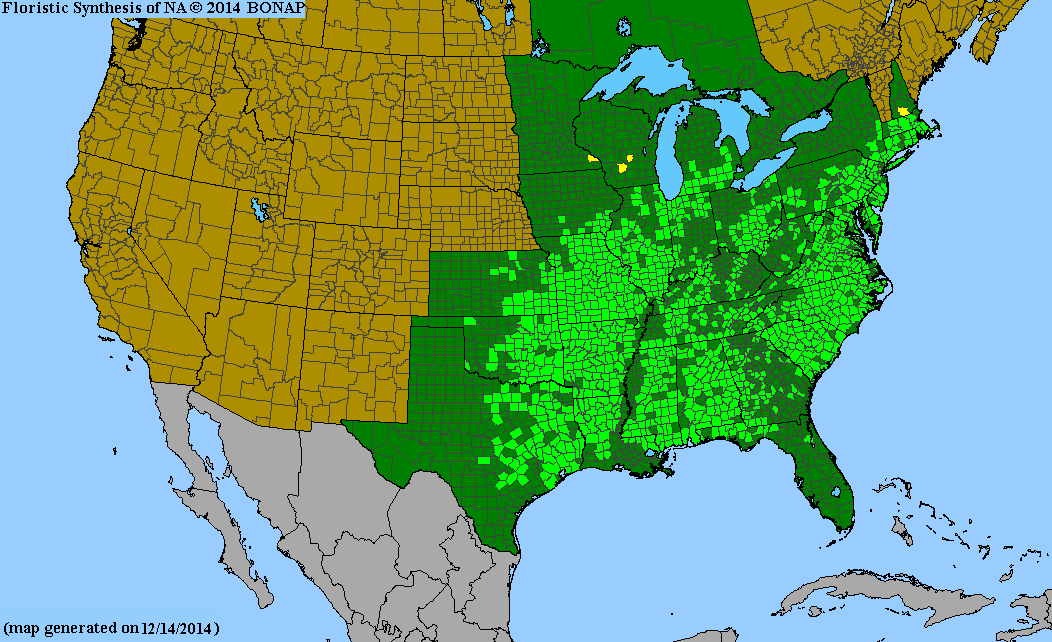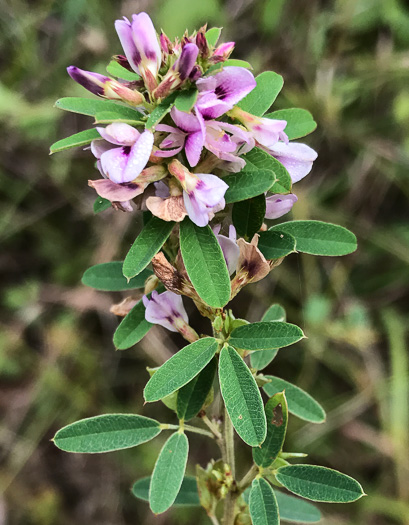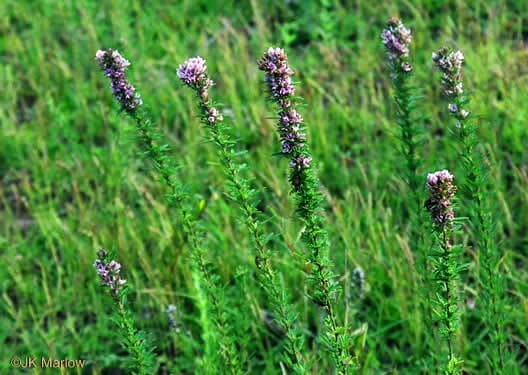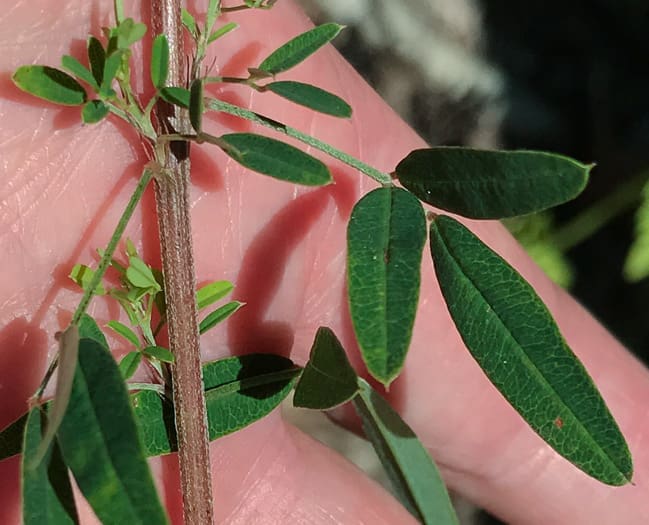Fabaceae
slender bush clover
Lespedeza virginica
Other Common Names
Virginia lespedeza
Plant Type
Shrub (less than 10 ft)
Life Cycle
Perennial
Typical Size
3-6 ft. tall
4-10 ft. wide
Tolerant of
Drought
Inolerant of
Poorly Drained Soil
Propagation
By seed, By division, By air-layering
Plant Propagation Notes
Cold moist stratify seed for about three weeks.
Plant Planting Notes
Provide up to 2 ft spacing. Flowers from new growth, so cutting to the ground in fall will produce more flowering stems the following spring.
Plants/Diseases
No significant disease or pest issues.
Wildlife Benefits
Nectar/pollen source for pollinating insects, Host plant for butterfly larvae, Fruit/seeds for birds
Leaves
Leaves alternate, compound with three leaflets, linear to oblong with entire margins.
Flowers
Light to dark pink, pea-like, in dense clusters.
Fruit
Legume.
Bark
Stems are green and hairy.
Toxicity
No known toxicity.

USDA Hardiness Zones
4, 5, 6, 7, 8, 9
Light Exposure
Full Sun, Part Sun/Shade
Soil Moisture
Dry
Soil Drainage
Well-drained
Soil pH
Acidic (less than 6.0), Neutral (6.0-8.0), Basic (greater than 8.0)
Native in South Carolina?
Yes
Plant Native Habitat
Woodland borders and longleaf pine sandhills.
Global Conservation Status (NatureServe)
Secure (G5)
Federal Conservation Status (USFWS)
Not Listed
Distribution Notes
Common throughout South Carolina.



